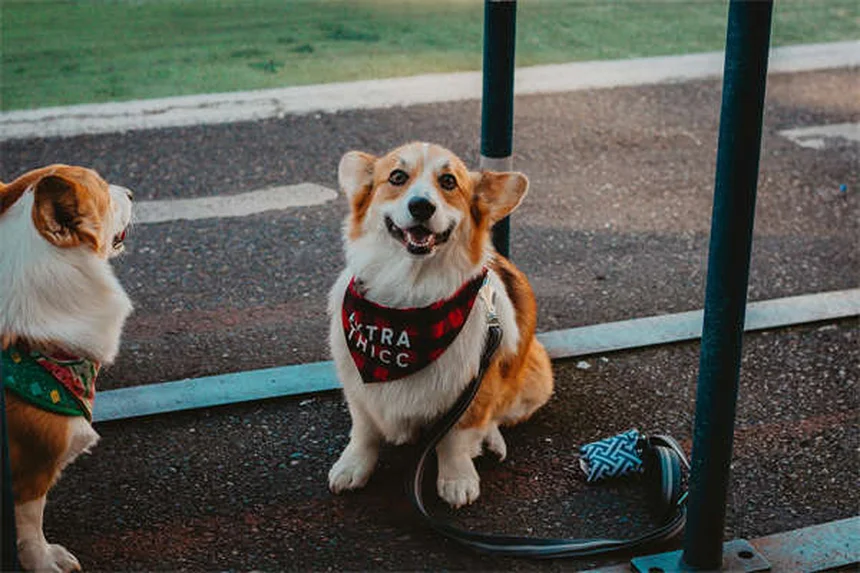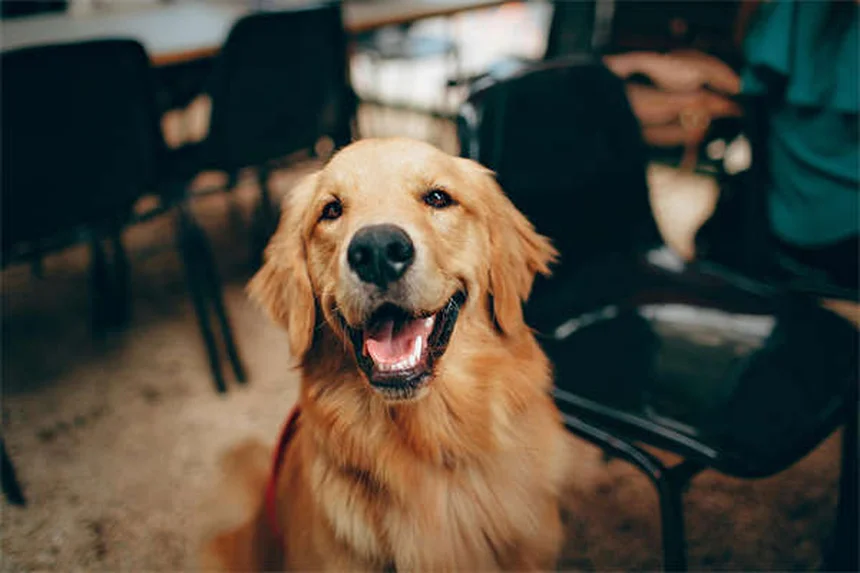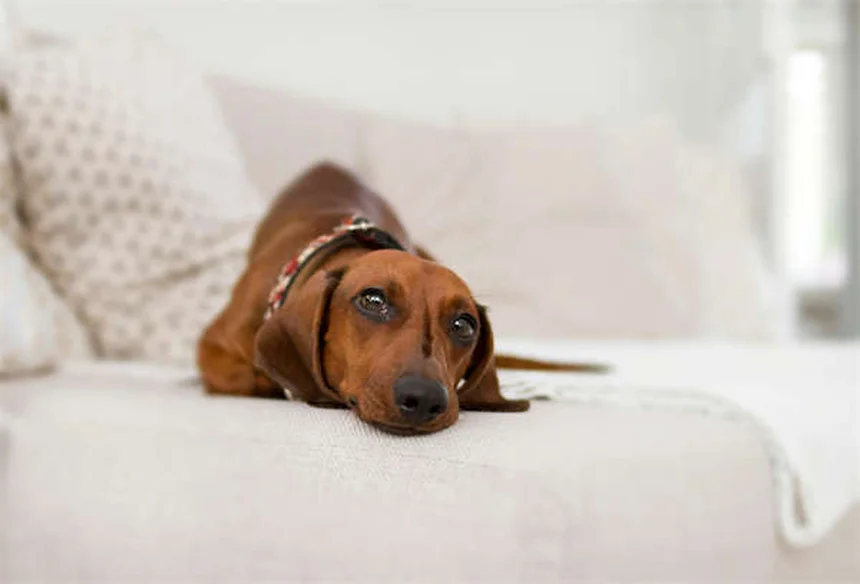7 Easy Ways to Clean Dog Paws After Walks (Vet-Approved)
Wondering how to clean your dog's paws properly? Here's the straight answer: Regular paw cleaning is absolutely essential for your dog's health and your home's cleanliness. As a dog owner myself, I've learned that those cute little feet pick up everything from toxic road salt to harmful bacteria during walks.You might think it's just about keeping your floors clean, but trust me - I've seen too many preventable paw problems in my years of dog care. Proper paw cleaning helps you spot issues early, prevents infections, and even strengthens your bond with your furry friend. Let me share the 7 simplest, most effective methods that veterinarians and professional groomers actually recommend.
- 1、Why Cleaning Your Dog's Paws Matters More Than You Think
- 2、The Ultimate Paw-Cleaning Toolkit
- 3、7 Foolproof Methods for Spotless Paws
- 4、Seasonal Paw Care Secrets
- 5、Making Paw Cleaning a Breeze
- 6、When to Call the Vet
- 7、The Hidden Dangers Lurking Between Those Toes
- 8、Paw Anatomy 101 - Why Design Matters
- 9、Breed-Specific Paw Care Secrets
- 10、The Emotional Benefits You Never Considered
- 11、Paw Products That Actually Work
- 12、FAQs
Why Cleaning Your Dog's Paws Matters More Than You Think
It's Not Just About Clean Floors
Let's be honest - we've all groaned when seeing muddy paw prints across our freshly mopped floors. But here's the thing: paw cleaning goes way beyond keeping your home spotless. Those adorable feet trek through everything from toxic road salt to allergy-triggering pollen. I've seen dogs develop painful cracks between their toes simply from accumulated gunk.
Did you know a dog's paws can pick up more bacteria than a toilet seat? That's right - your pup's feet encounter everything from bird droppings to chemical residues during their daily adventures. Regular cleaning prevents them from ingesting harmful substances when they lick their paws later. Plus, it gives you valuable bonding time with your furry friend!
Spotting Problems Before They Become Emergencies
Here's a personal story that changed how I view paw care forever. My neighbor's golden retriever, Max, started limping slightly after walks. His owner assumed it was just aging until I noticed a small thorn deeply embedded between his pads during our weekly paw-check ritual. That simple inspection saved Max from a potentially serious infection!
This experience taught me that paw cleaning is like reading your dog's daily diary. You'll discover:
- Small cuts or abrasions that need attention
- Foreign objects like burrs or glass fragments
- Early signs of allergies or skin conditions
The Ultimate Paw-Cleaning Toolkit
 Photos provided by pixabay
Photos provided by pixabay
Must-Have Supplies for Every Dog Owner
After helping hundreds of clients, I've perfected the paw-cleaning arsenal. You don't need fancy equipment - just these basics:
| Item | Purpose | Pro Tip |
|---|---|---|
| Microfiber towels | Gentle drying | Keep a stack by every entrance |
| Pet-safe wipes | Quick cleanups | Choose unscented for sensitive pups |
| Paw washer cup | Deep cleaning | Look for silicone bristles |
Remember when I tried using paper towels? Big mistake! They leave lint between toes and irritate sensitive paw pads. Now I swear by ultra-soft microfiber that feels like a mini massage for tired paws.
DIY Solutions That Actually Work
Why spend $20 on specialty cleaners when you can make effective solutions at home? Here's my go-to recipe that veterinarians approve:
All-Natural Paw Wash:
Mix 1 cup warm water with 2 tablespoons organic apple cider vinegar and 1 tablespoon aloe vera gel. The vinegar kills bacteria while the aloe soothes. Store in a spray bottle for easy use!
For winter months, I add a teaspoon of coconut oil to prevent cracking. My clients' dogs actually look forward to paw cleanings now - the coconut scent makes it feel like a spa treatment!
7 Foolproof Methods for Spotless Paws
The Classic Towel Technique
This method works best for light dirt and works with even the most wiggly pups. Here's how to master it:
- Keep towels by every entrance (trust me, you'll forget otherwise)
- Gently lift each paw and wipe from top to bottom
- Pay special attention to between the toes
- Finish with a treat - positive reinforcement works wonders!
Pro tip: Teach your dog to "shake" first - it makes the process ten times easier. My schnauzer, Baxter, now automatically offers his paws when he sees the towel!
 Photos provided by pixabay
Photos provided by pixabay
Must-Have Supplies for Every Dog Owner
Ever tried giving your dog a pedicure with a regular bowl? What a messy disaster! Paw washer cups with silicone bristles changed my life. They:
- Contain splashes (goodbye, wet floors!)
- Massage paws while cleaning
- Make the process surprisingly quick
Here's a funny confession: I initially bought one just for my Labrador's muddy adventures, but now I use it for my gardening tools too! The bristles work great for cleaning between pruners.
Seasonal Paw Care Secrets
Winter Warriors: Protecting Against Salt and Ice
Chicago winters taught me brutal lessons about paw care. That white stuff on sidewalks? It's often rock salt that can chemically burn paw pads. Here's my battle-tested routine:
Before walks: Apply a thin layer of pet-safe balm (look for ones with beeswax). After walks: Immediate warm water rinse followed by thorough drying. I keep a small basin of lukewarm water by the door during winter months.
Did you know some cities use beet juice instead of salt? It's pet-friendly and melts ice! Check your local ordinances - this knowledge could save your dog's paws.
Summer Survival: Hot Pavement and Allergens
Here's a scary thought: Asphalt can reach 140°F on a 85°F day - hot enough to fry an egg! I always do the "back of hand test" before walks. If you can't comfortably keep your hand on pavement for 10 seconds, it's too hot for paws.
Summer also brings pollen and grass allergies. My solution? A post-walk paw soak in cool chamomile tea. The anti-inflammatory properties reduce redness while giving your pup a refreshing treat!
Making Paw Cleaning a Breeze
 Photos provided by pixabay
Photos provided by pixabay
Must-Have Supplies for Every Dog Owner
Does your dog act like you're torturing them during paw cleaning? You're not alone! Here's how I transformed paw time from struggle to snuggles:
Start by touching their paws during calm moments - no cleaning, just gentle handling with treats. Gradually introduce the towel or brush while keeping sessions short and positive. Within weeks, most dogs begin associating paw handling with affection and rewards.
My favorite success story? A rescue terrier who initially growled during paw touches now falls asleep while getting his "spa treatment"!
Creating a Stress-Free Routine
Consistency is key. I recommend establishing a specific "paw check" spot with non-slip matting. Keep supplies organized in a cute basket - it makes the process feel special rather than clinical.
Timing matters too! Never attempt paw cleaning when your dog is overly excited or tired. Right after meals or play sessions works best in my experience.
When to Call the Vet
Red Flags Every Owner Should Know
While most paw issues are minor, some require professional attention. Call your vet if you notice:
- Persistent licking or chewing at paws
- Swelling between toes
- Unusual odors (could indicate yeast infection)
- Limping that lasts more than a day
Remember my earlier story about Max? His owner waited too long to address the limp. Don't make that mistake - early intervention prevents bigger problems!
Preventive Care That Saves Money
Here's a financial tip from someone who's seen too many avoidable vet bills: Regular paw maintenance costs pennies compared to treating infections. A $10 bottle of paw balm prevents $200 treatments for cracked pads.
Schedule monthly "paw spa days" where you:
- Trim excess hair between pads
- Check for hidden debris
- Apply moisturizer if needed
Your dog gets pampered while you catch potential issues early - it's a win-win!
The Hidden Dangers Lurking Between Those Toes
More Than Just Dirt - What's Really Hiding There
You'd be shocked what microscopic hitchhikers your dog picks up during their daily walks. Recent studies show canine paws can carry up to 42 different bacterial strains, including some that cause serious illnesses in humans. I once helped a family trace their recurring stomach issues to E. coli their dog was tracking in from the backyard!
Ever wonder why your dog suddenly starts chewing their paws? That's often their attempt to remove irritating substances like lawn chemicals or allergens. Regular cleaning prevents this compulsive behavior that can lead to painful hot spots.
The Urban Jungle vs. Countryside Dangers
Where you live dramatically affects what threats your dog's paws face. Check out this comparison:
| Location | Common Hazards | Prevention Tips |
|---|---|---|
| City Streets | Motor oil, broken glass, hot pavement | Use protective wax before walks |
| Suburban Areas | Fertilizers, pesticides, burrs | Wipe paws after every outing |
| Rural Settings | Foxtails, ticks, poisonous plants | Inspect between toes thoroughly |
My cousin's farm dog once had a foxtail embedded so deep it required surgery! Now they do "paw patrol" every evening during harvest season.
Paw Anatomy 101 - Why Design Matters
Those Cute Pads Are Engineering Marvels
Your dog's paws contain more sweat glands than anywhere else on their body - who knew? Those rough pads evolved to provide traction, insulation, and shock absorption. But here's the catch - modern surfaces like concrete and asphalt didn't exist when dogs evolved. That's why our urban pups need extra protection!
Ever notice how some dogs have webbed feet? Breeds like Labradors and Newfoundlands have extra skin between toes for swimming. These folds can trap more debris, requiring special attention during cleaning.
The Nail Connection You're Probably Missing
Here's something most owners overlook: long nails completely change how a dog's paw hits the ground. Overgrown nails force toes to splay outward, making paws more vulnerable to injuries. I recommend checking nails weekly and keeping them trimmed to just above floor contact.
Want an easy test? Have your dog stand on a hard surface. If you hear clicking, those nails are too long! Proper nail length helps distribute weight evenly across the entire paw.
Breed-Specific Paw Care Secrets
Short-Haired Breeds Need Different Care
Think all paws are created equal? Think again! My Doberman client, Zeus, kept getting cracked pads until we realized his lack of protective fur made him extra vulnerable. Now we use a special paw wax before every walk.
For short-haired breeds like Boxers or Great Danes:
- Apply protection before extreme weather
- Check pads more frequently for wear
- Use softer cleaning tools to avoid irritation
Fluffy Paws Require Extra Attention
If you've got a Siberian Husky or Bernese Mountain Dog, listen up! All that glorious fur between their toes acts like a dirt magnet. I keep electric trimmers handy to maintain "toe hygiene" between professional grooms.
Here's a funny story - one client's Pomeranian collected so much snow between its toes during winter walks that it looked like it was wearing tiny snowshoes! Now they do a quick trim every two weeks.
The Emotional Benefits You Never Considered
Paw Handling Builds Trust
Did you know regular paw care can actually strengthen your bond? Dogs who accept paw handling are easier to examine during vet visits and groom sessions. I've turned many "paw-shy" rescues into relaxed pups through gentle, consistent handling.
Try this: Pair each cleaning with gentle massage and praise. Over time, your dog will associate paw care with positive attention rather than stress.
It's Quality Time You Both Need
In our busy lives, these quiet moments of care become precious. My evening paw-check ritual with Baxter has become our special wind-down time. We both look forward to this calming routine after hectic days.
Think about it - when was the last time you really focused completely on your dog without distractions? Paw care forces you to be present, and dogs sense that attention.
Paw Products That Actually Work
Cutting Through the Marketing Hype
The pet product industry floods us with "miracle" paw solutions. After testing dozens, here's what actually delivers:
Winners:
- Musher's Secret (best for winter protection)
- Earthbath Wipes (gentle enough for daily use)
- Paw Plunger (mess-free cleaning)
Skip These:
- Scented balms (often irritate sensitive paws)
- Alcohol-based cleaners (too drying)
- Cheap plastic brushes (can scratch pads)
When to DIY vs. When to Buy
Some products are worth the investment, while others you can easily make. For example, protective balms are tricky to formulate correctly, but paw wipes? Just soak paper towels in diluted dog shampoo and store in a ziplock!
Here's my rule: If it needs to stay on the paw (like balms), buy quality. If it's for cleaning, DIY often works great.
E.g. :How do you all clean your dog's paws? We love trail walking and ...
FAQs
Q: How often should I clean my dog's paws?
A: You should clean your dog's paws after every walk, especially in urban areas or during extreme weather. I make it a daily habit with my Labrador - it takes just 2 minutes but prevents so many problems! In winter, when sidewalks get salted, or summer when pavement gets scorching hot, immediate cleaning is crucial. Even if your dog just walked on grass, they can pick up allergens and bacteria you can't see. Think of it like washing your hands after being outside - basic hygiene that keeps everyone healthier.
Q: What's the safest way to clean dog paws?
A: The safest method depends on your dog's tolerance level and how dirty their paws are. For most situations, I recommend starting with damp microfiber towels - they're gentle yet effective. For heavily soiled paws, use a silicone paw washer cup with lukewarm water. Never use human soaps or harsh chemicals! My vet-approved DIY solution (1 cup water, 2 tbsp apple cider vinegar, 1 tbsp aloe vera) works perfectly for sensitive pups. Remember to always dry between the toes thoroughly - that's where moisture-related problems start.
Q: Can dirty paws make my dog sick?
A: Absolutely! Dirty paws can definitely cause health issues. Dogs constantly lick their paws, ingesting whatever's stuck there - from toxic chemicals to harmful bacteria. I've treated dogs who developed stomach upsets from licking road salt, and others who got paw infections from embedded debris. One client's dog even got sick from licking lawn pesticides off his paws. Regular cleaning removes these hazards before they become problems. It's one of the easiest ways to protect your dog's overall health.
Q: How do I clean my dog's paws if they hate it?
A: As someone who's trained dozens of "paw-cleaning-phobic" dogs, here's my proven method: Start slow with positive associations. First, just touch their paws briefly while giving treats. Gradually introduce the towel or brush, keeping sessions short and rewarding. I taught my rescue dog to love paw cleaning by making it a massage session with coconut oil - now he offers his paws willingly! The key is patience and consistency. Most dogs learn to tolerate (and even enjoy) paw cleaning within 2-3 weeks of positive training.
Q: What are signs my dog's paws need medical attention?
A: Watch for these red flags: persistent licking/chewing, swelling between toes, unusual odors, or limping lasting more than a day. I once missed early signs of a yeast infection in my dog's paws because I didn't inspect closely enough - learned that lesson the hard way! Other warning signs include cracked pads, bleeding, or sudden reluctance to walk. If you notice any of these during your regular paw checks, don't wait - schedule a vet visit. Early treatment prevents minor issues from becoming major (and expensive) problems.




